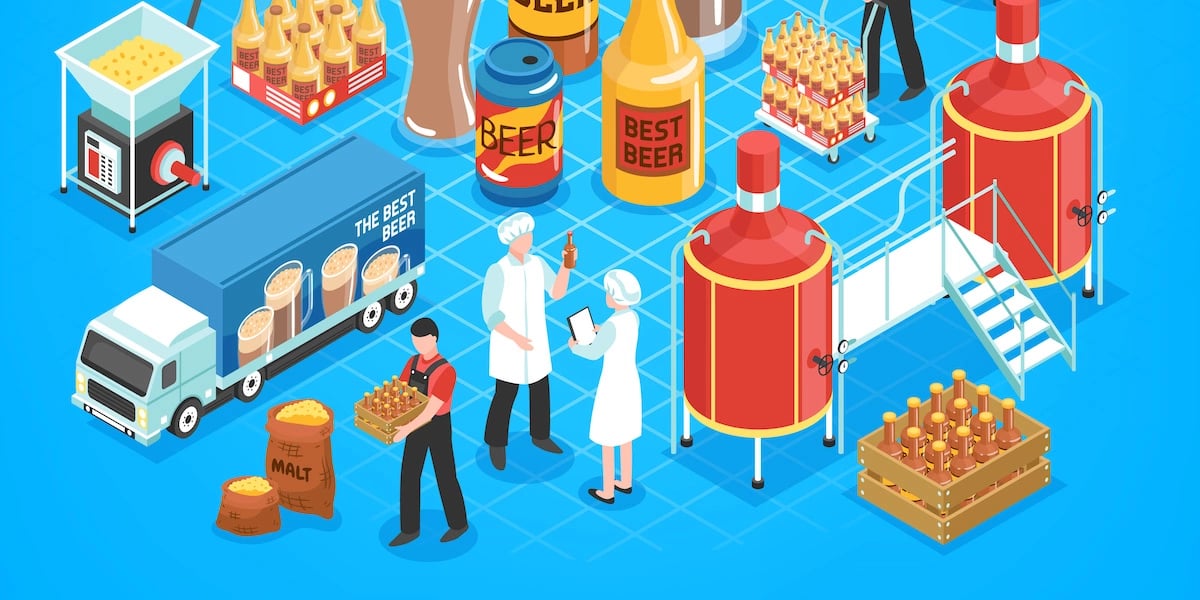You may also like
Subscribe now
for a weekly blog digest containing growth tips, industry updates, and product announcements!
5 Minute Read
The driver shortage isn’t a new issue in the world of beer distribution—and it’s not in any danger of abating in the near future. As anyone in the industry knows, this has a huge impact on your ability to get the right kegs to the right accounts at the right time. Often, it can feel like there just isn’t enough delivery capacity to provide exceptional service to your customers.

Simply put, the crunch in the number of available drivers has seriously raised the stakes when it comes to getting the most out of the capacity you do have. This means maximizing the number of stops each driver can make per day, and minimizing the number of missed or failed deliveries.
This is easier said than done: You can’t risk letting the big box liquor store receive its pallets outside of their requested time window—but if you build in too much buffer time between stops to keep that from happening, your delivery volumes will fall off dramatically. At the same time, you can’t have plans that are so rigid that you can’t accommodate off-day requests or other changes.
It’s a tough tightrope to walk. But could the solution be as simple as an adjustment to your delivery routing capabilities?
On some level, the challenges in modern beer distribution are precisely the ones we mentioned above—but dig a little deeper, and one of the biggest issues facing the modern beer distribution outfit is the fact that they’ve essentially been left out of much of the technology innovation in the last mile delivery sector. While retailers have a host of last mile delivery startups angling for their business, the beverage delivery software solutions that have been reliable partners in the beer industry have been bought out, spun off, and rebranded to the point where they can’t reliably develop solutions that meet the needs of the beer industry.
The result of the above is that, where your average furniture retailer might be maximizing delivery capacity and improving customer satisfaction with dynamic route plans, beer distributors don’t have that luxury. Most distribution outfits wind up relying on static route plans, which present a number of issues:
Given all that, why don’t more beer distributors switch to dynamic route optimization? After all, it works for retailers, and it’s all the rage technologically.
Sound good in theory—but in practice, dynamic routing is often a recipe for chaos and confusion. When you can’t specify driver affinities and preferred time slots for your most profitable stops within your routing engine, dynamic route optimization algorithms will generally produce routes that don’t meet your top customers’ needs. By the time you’ve manually massaged the dynamically-generated route into something that will actually work, you’ve lost out on all the efficiencies that the process was supposed to produce.
So—static routing leaves you with no flexibility to maximize capacity, and dynamic routing makes it impossible to efficiently provide the strong customer service that your business thrives on. Where does that leave beer distributors?
Given the limitations of both static and dynamic route planning, beer distributors need to be able to find and leverage a hybrid routing approach. This should be something that combines the benefits of static routing with those of dynamic routing:
Basically, you want your most important and profitable stops to be non-negotiable from the perspective of the routing engine. The big Kroger stores on your route should keep their sequence, driver, and timeframe no matter what’s going on around them. Then, smaller or newer accounts should be dynamically routed around those “anchor stops.” In a perfect world, you’d have multiple static plans (e.g. for regular weeks vs. holiday weeks) that could easily be swapped in and out as needed to reflect changes in volume—and you’d have the capabilities to rapidly handle off-day requests and other changes without a ton of manual effort.
With hybrid routing, you ensure the best possible service to the best possible customers without underutilizing your delivery capacity. When your labor force is limited, this is beyond imperative. Why? Because it means that rather than buffering between stops to ensure on-time deliveries, your drivers can complete more stops in a day with confidence that they’ll be on-time throughout.
This can have a big impact on your operations. When your drivers are completing more stops per day without risking late deliveries to your biggest customers, you’re obviously in a position to boost the profitability of each route. At the same time, the fact that you’re actively running the dynamic routing engine for each day’s routes means that you can ensure that your ETAs are realistic for each stop. When your routing engine can account for the needs of this hybrid approach, you can also avoid the work of manually massaging routes into workable states. And because the routes don’t have to be massaged, your route planners can take a vacation without the entire process devolving into chaos.
Beer distributors are increasingly being asked to do more with less, and providing the highest quality service to your most profitable stops isn’t getting any easier. Luckily, a hybrid approach to route optimization can help you overcome these challenges and even find new delivery efficiencies. The trick is just to find a solution provider who can support this approach.
for a weekly blog digest containing growth tips, industry updates, and product announcements!